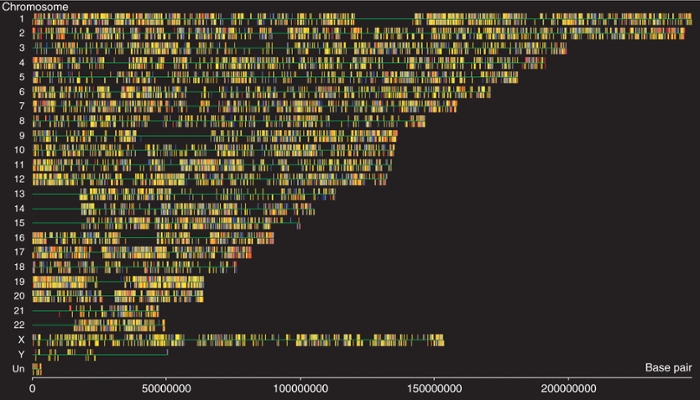Comprehensive DNA methylation profiling in a human cancer genome identifies novel epigenetic targets
Carcinogenesis 27(12):2409-2423. 2006.

Abstract
Expression microarrays hybridized with RNA can simultaneously provide both phenotypic (gene expression) and genotypic (marker) data. We developed two types of genetic markers from Affymetrix GeneChip expression data to generate detailed haplotypes for 148 recombinant inbred lines (RILs) derived from Arabidopsis thaliana accessions Bayreuth and Shahdara. Gene expression markers (GEMs) are based on differences in transcript levels that exhibit bimodal distributions in segregating progeny, while single feature polymorphism (SFP) markers rely on differences in hybridization to individual oligonucleotide probes. Unlike SFPs, GEMs can be derived from any type of DNA-based expression microarray. Our method identifies SFPs independent of a gene’s expression level. Alleles for each GEM and SFP marker were ascertained with GeneChip data from parental accessions as well as RILs; a novel algorithm for allele determination using RIL distributions capitalized on the high level of genetic replication per locus. GEMs and SFP markers provided robust markers in 187 and 968 genes, respectively, which allowed estimation of gene order consistent with that predicted from the Col-0 genomic sequence. Using microarrays on a population to simultaneously measure gene expression variation and obtain genotypic data for a linkage map will facilitate expression QTL analyses without the need for separate genotyping. We have demonstrated that gene expression measurements from microarrays can be leveraged to identify polymorphisms across the genome and can be efficiently developed into genetic markers that are verifiable in a large segregating RIL population. Both marker types also offer opportunities for massively parallel mapping in unsequenced and less studied species.
J.M. Ordway, J.A. Bedell, R.W. Citek, A. Nunberg, A. Garrido, R. Kendall, J.R. Stevens, D. Cao, R.W. Doerge, Y. Korshunova, H. Holemon, J.D. McPherson, N. Lakey, J. Leon, R.A. Martienssen and J.A. Jeddeloh